Why Sir Syed loses and Allama Iqbal wins in Pakistan
Iqbal said what people wanted to hear — and his genius lay in crafting it with beautifully chosen words.
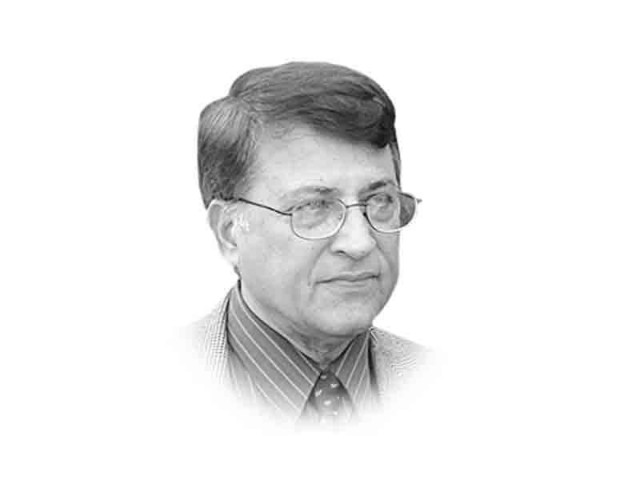
The writer retired as professor of physics from Quaid-e-Azam University, Islamabad
For every 19th century Muslim intellectual, including Sir Syed and the Allama, the outstanding challenge of the time was to understand the ascendancy of western civilisation and the apparently unstoppable decline of Muslim society. Seven centuries had passed since the end of the Golden Age, and Islamic societies everywhere were militarily feeble and intellectually sterile. Sir Syed and Iqbal courageously chose to confront this galling truth, but they arrived at dramatically different prescriptions for the rescue and reconstruction of Indian Muslims. A century later, these two national icons distinguish liberal Pakistanis from conservative ones.
For Sir Syed, the trauma of Indian Muslims after the failed 1857 uprising against the British called for a radically new interpretation of Islam. As a religious scholar and hafiz, he considered himself well-equipped for the task. Backwardness, said Sir Syed, resulted from superstitious beliefs and rejection of maaqulat (reason) in favour of blind obedience to manqulat (tradition). Desperate remedies were needed if the Muslims of India were ever to become anything other than “stableboys, cooks, servants, hewers of wood, and drawers of water”. His goal was to make Islam compatible with post-Renaissance Western humanistic and scientific ideas, and to extract the ‘pure’ belief from fossilised dogma.
It was a difficult enterprise to take on. The period after the end of Emperor Akbar’s reign had been one of unbroken anti-science and anti-rationalist conservatism. Some 200 years before Sir Syed, Sheikh Ahmed Sirhindi and other influential religious figures had issued fatwas against mathematics and the secular sciences, and demanded that the education of Muslims be limited to religious books. Initially Sir Syed was also inclined to this point of view but, following his gradual transformation during the 1850s, he rejected this view and challenged his contemporaries.
In Tahzib-ul-Akhlaq, he writes: “Yes, if the Mussulman be a true warrior and thinks his religion correct, then let him come fearlessly to the battleground and do unto Western knowledge and modern research what his forefathers did to Greek philosophy. Only then shall our religious books be of any real use. Mere parroting and praising ourselves will not do.” (“Apnay moon mian mithoo kahney say koee faida nahin”)
In his mind, the way forward was clear: Indian Muslims must learn the English language, practice the scientific method, accept that physical phenomena are explainable by physics only, and support British imperial rule against the rule of Mughals (who had by then sunk into decadence and depravity). This last piece of advice made him a target of bitter ridicule by secular nationalists such as Jamaluddin Afghani.
Sir Syed accepted the Holy Quran as divinely revealed but he frequently reminded his readers of Islam’s forgotten rationalist (Mutazilite) tradition, as in the works of Averroes. He proposed a radical reinterpretation of the Holy Quran to make it compatible with science and modernity. Among other matters this involved understanding miracles, which science cannot accept as factual. Sir Syed therefore explained the Great Flood, as well as various miracles of Jesus, to be purely allegorical and symbolic. He also interpreted Islamic laws as actually forbidding polygamy and amputation of limbs. Quite expectedly, his claims provoked a furious reaction from the ulema of the time and he was decried as a heretic.
Sir Syed’s writings are all in Urdu and, whether or not one agrees with him, his clarity in supporting modernity and science is manifest. Equally, his remedies for social reform are clear and unambiguous. On the other hand the Allama’s only serious prose is to be found in English, and he leaves key questions unanswered or ambiguous. At times, to revive Islamic civilisation, Iqbal appears to call for a return to the sword. But at other times he stresses the enhancement of khudi — a sophisticated philosophical construct roughly describable as self-esteem. This construct, however, has a plethora of interpretations. Does it belong to the physical world? Will more khudi bring more order or more anarchy?
Iqbal’s politics, routed through his soul-stirring poetry, is the real reason why he is Pakistan’s supreme icon today. In his epic poem shikwa, like Samuel Huntington, he frames the world exclusively in terms of us-versus-them and the superiority of one civilization over all others. His pan-Islamic mard-e-momin belongs to the ummah and this perfect human aspires to martyrdom: shahadat hai matloob o maqsood-e-momin. Like a falcon, the mard-e-momin is a fighter and above worldly desire: tu shaheen hai basera kar paharon kee chatanon main. These verses can be found in Pakistan Army magazines, on its recruiting banners, and are sung with great fervour.
Iqbal, unlike Sir Syed, leaves the gap between science and religion unbridged. He takes no explicit position on miracles. On the contrary, he asserts that, “Classical Physics has learned to criticise its own foundations. As a result of this criticism the kind of materialism, which it originally necessitated, is rapidly disappearing.” But no real physicist can take this statement seriously. Even with the discovery of quantum physics — which superseded and improved upon classical physics — the description of observed physical phenomena requires nothing beyond material causes. In the battle for Pakistan’s soul, Sir Syed’s rational approach ultimately lost out and the Allama’s call on emotive reasoning won. Iqbal said what people wanted to hear — and his genius lay in crafting it with beautifully chosen words. Unfortunately, his prescriptions for reconstructing society cannot help us in digging ourselves out of a hole.
Published in The Express Tribune, February 9th, 2013.


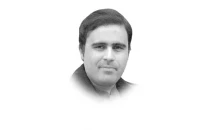



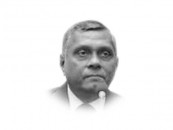

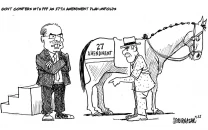


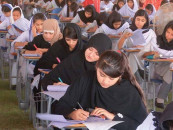


COMMENTS
Comments are moderated and generally will be posted if they are on-topic and not abusive.
For more information, please see our Comments FAQ